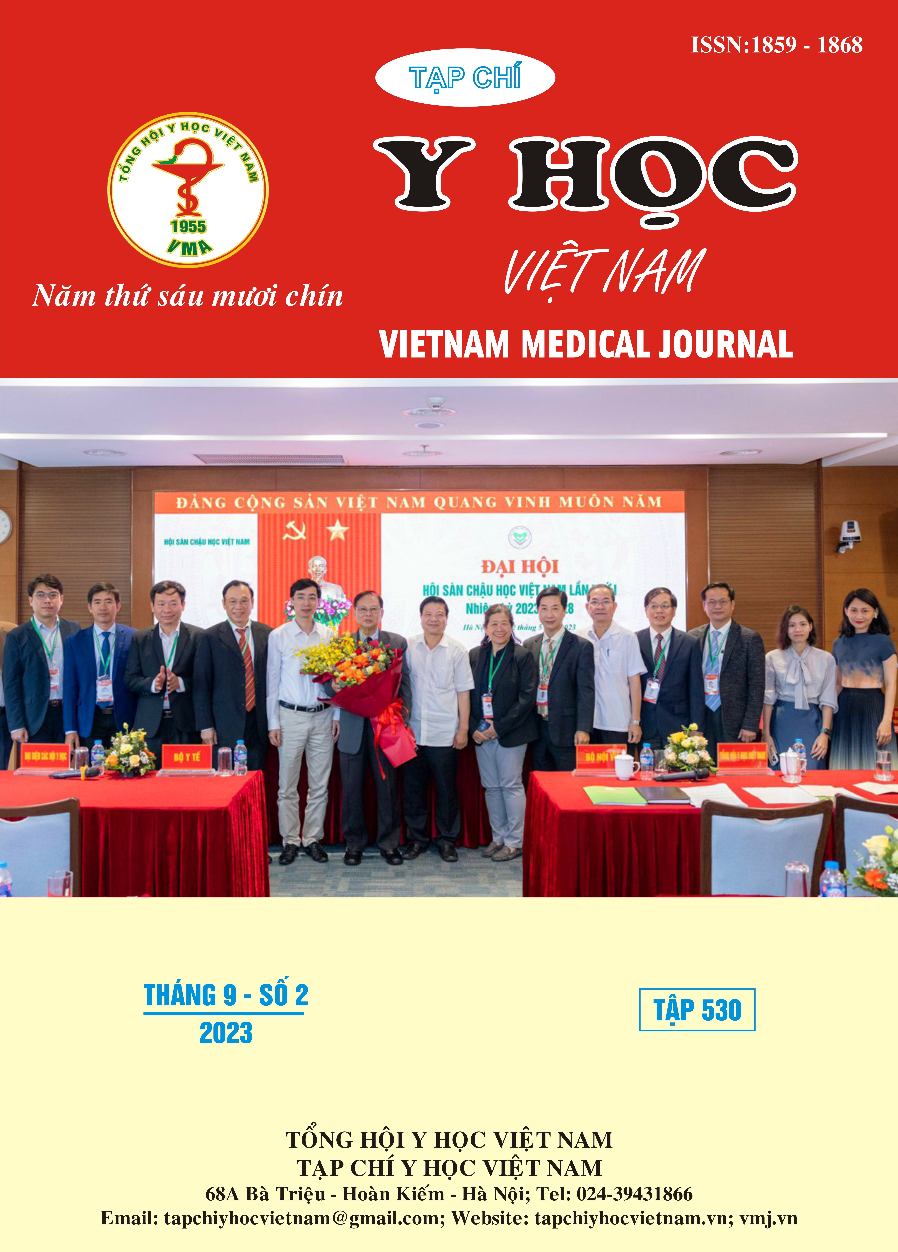FREQUENCY AND CHARACTERISTICS OF ACUTE DECOMPENSATED HEART FAILURE SYNDROME IN PATIENTS WITH ACUTE MYOCARDIAL INFARCTION
Main Article Content
Abstract
Introduction: Metabolic syndrome is one of the global health issues. The diagnosis of metabolic syndrome in patients with acute myocardial infarction is receiving increasing attention. However, in Vietnam, there is still limited research on metabolic syndrome in patients with acute myocardial infarction. Objective: This study was conducted to determine the frequency and characteristics of metabolic syndrome in patients with acute myocardial infarction. Subjects: Patients with acute myocardial infarction were treated at the Interventional Cardiology Department of Cho Ray Hospital from November 2022 to May 2023. Study design: Cross-sectional descriptive study. Results: There were 199 patients who met the study criteria, with a mean age of 64.5 ± 11.3 and a male-to-female ratio of 2.7:1. Among the study population, the most common underlying factors were hypertension and smoking, with respective rates of 31.66% and 42.71%. Metabolic syndrome was present in 136 patients, accounting for a prevalence rate of 68.34%. The proportion of females with metabolic syndrome was higher than that of males (81.33% vs. 63.69%, p=0.019). The group with metabolic syndrome had higher mean values of waist circumference (cm), systolic blood pressure (mmHg), diastolic blood pressure (mmHg), blood glucose (mg/dL), and blood triglycerides (mg/dL), and lower mean values of HDL cholesterol (mg/dL) compared to the group without metabolic syndrome, with statistically significant differences (p < 0.05). Among patients with metabolic syndrome, the highest prevalence was observed for elevated blood glucose (94.85%), followed by reduced HDL cholesterol (92.65%), and the least common component was high blood pressure (47.06%). Metabolic syndrome with three components accounted for the highest proportion at 42.65%. The presence of metabolic syndrome tended to be associated with a higher proportion of Killip IV classification at admission compared to the group without metabolic syndrome, with an odds ratio of 2.23 (95% CI: 0.61-12.88, p=0.194). The prevalence of left ventricular dysfunction (LVEF ≤ 40%) did not differ between the two groups, with p = 0.841. Conclusion: The frequency of metabolic syndrome in patients with acute myocardial infarction is 68.34%. Among the group with metabolic syndrome, elevated blood glucose is the most common component, and metabolic syndrome with three components has the highest prevalence.
Article Details
Keywords
Metabolic syndrome, acute myocardial infarction, cardiogenic shock, heart failure
References
2. Hồ Thượng Dũng, Dương Thị Kim Loan. Nghiên cứu đặc điểm hội chứng chuyển hóa ở bệnh nhân nhồi máu cơ tim cấp tại bệnh viện thống nhất Thành phố Hồ Chí inh. Y Học TP Hồ Chí Minh. 2012 2012;16(1)
3. Carbone S, Canada JM, Billingsley HE, Siddiqui MS, Elagizi A, Lavie CJ. Obesity paradox in cardiovascular disease: where do we stand? Vascular health and risk management. 2019;15:89-100. doi:10.2147/vhrm.S168946
4. Lovic MB, Savic L, Matic D, Djordjevic D, Nedeljkovic I, Tasic I. Predictive value of metabolic syndrome definitions in patients with myocardial infarction with ST segment elevation - are they all the same? Acta cardiologica. Dec 2018;73(6):574-582. doi:10.1080/00015385.2018.1424599
5. Cavallari I, Cannon CP, Braunwald E, et al. Metabolic syndrome and the risk of adverse cardiovascular events after an acute coronary syndrome. European journal of preventive cardiology. May 2018;25(8):830-838. doi:10.1177/2047487318763897
6. Thygesen K, Alpert JS, Jaffe AS, et al. Fourth Universal Definition of Myocardial Infarction (2018). Journal of the American College of Cardiology. Oct 30 2018;72(18):2231-2264. doi:10.1016/j.jacc.2018.08.1038
7. Alberti KGMM, Eckel RH, Grundy SM, et al. Harmonizing the Metabolic Syndrome. Circulation. 2009/10/20 2009;120(16):1640-1645. doi:10.1161/CIRCULATIONAHA.109.192644
8. Saklayen MG. The Global Epidemic of the Metabolic Syndrome. Current hypertension reports. Feb 26 2018;20(2):12. doi:10.1007/s11906-018-0812-z


